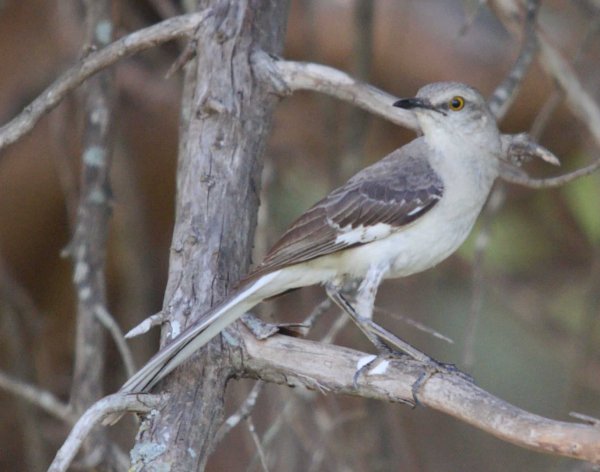Northern Mockingbird
(Mimus polyglottos)
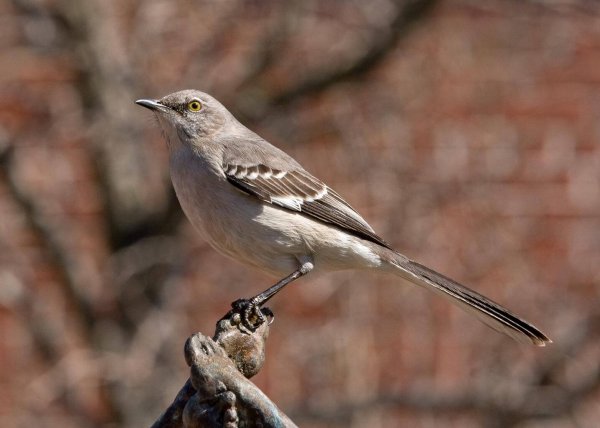
The Northern Mockingbird is a common bird in yards throughout its range, but it is most noted for its ability to mimic almost anything it hears, including other birds, along with a wide variety of man-made sounds, including bells, car alarms, air conditioners, machinery... You name it, a mockingbird somewhere has mimicked it. Their songs are typically long and rambling strings of different sounds, often grouped in threes. They may sing one mimic phrase three times, then switch to another (for three times), then another, and on and on until you wonder when the singer will stop for breath.
Mockingbirds are also quite fearless. They will attack any creature they see as a threat, including humans and cats. They also have a long memory, and have been known to attack individuals for several years after having messed with a nest or nestling. Here's a true story illustrating that memory. One of our mothers picked up a mockingbird nestling that had fallen from a nest and took it inside to care for it. For two years after that, she couldn't go into the front yard without a mockingbird attacking her.
Size: return to top
- Length: 9.25 inches
- Wingspan: 1.8 inches
- Weight: 13 oz.
How To Identify: return to top
Adults
Males and females look the same. Both are an overall gray, with a hint of brown. They are lighter gray on the undersides, and a bit darker above. The wing is largely dark gray, but with a prominent white patch that can even be seen when the bird is perched. The tail is dark gray, but with white outer tail feathers. The iris is yellow.
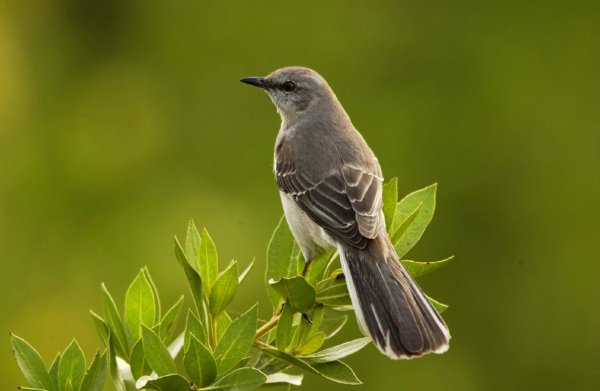
Immatures
Young that are just out of the nest will have some spotting on the breast, as you can see in the photo below. Other than that, they resemble the adults.
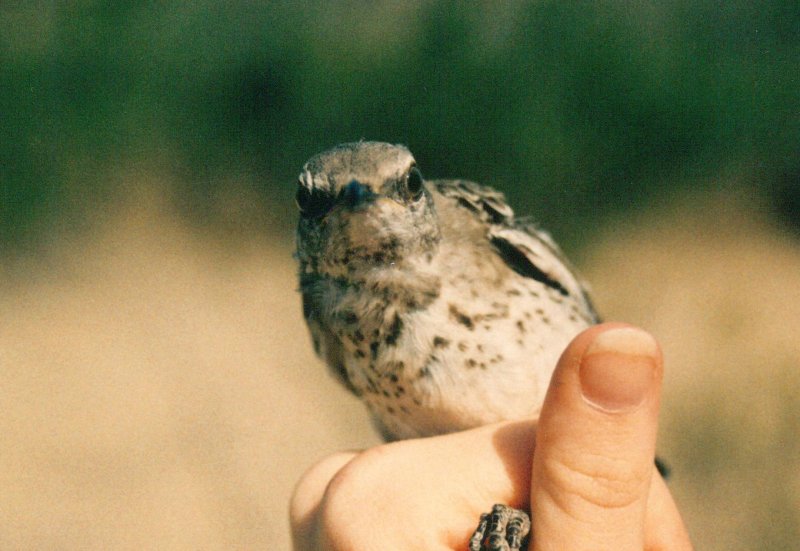
Range Map: return to top
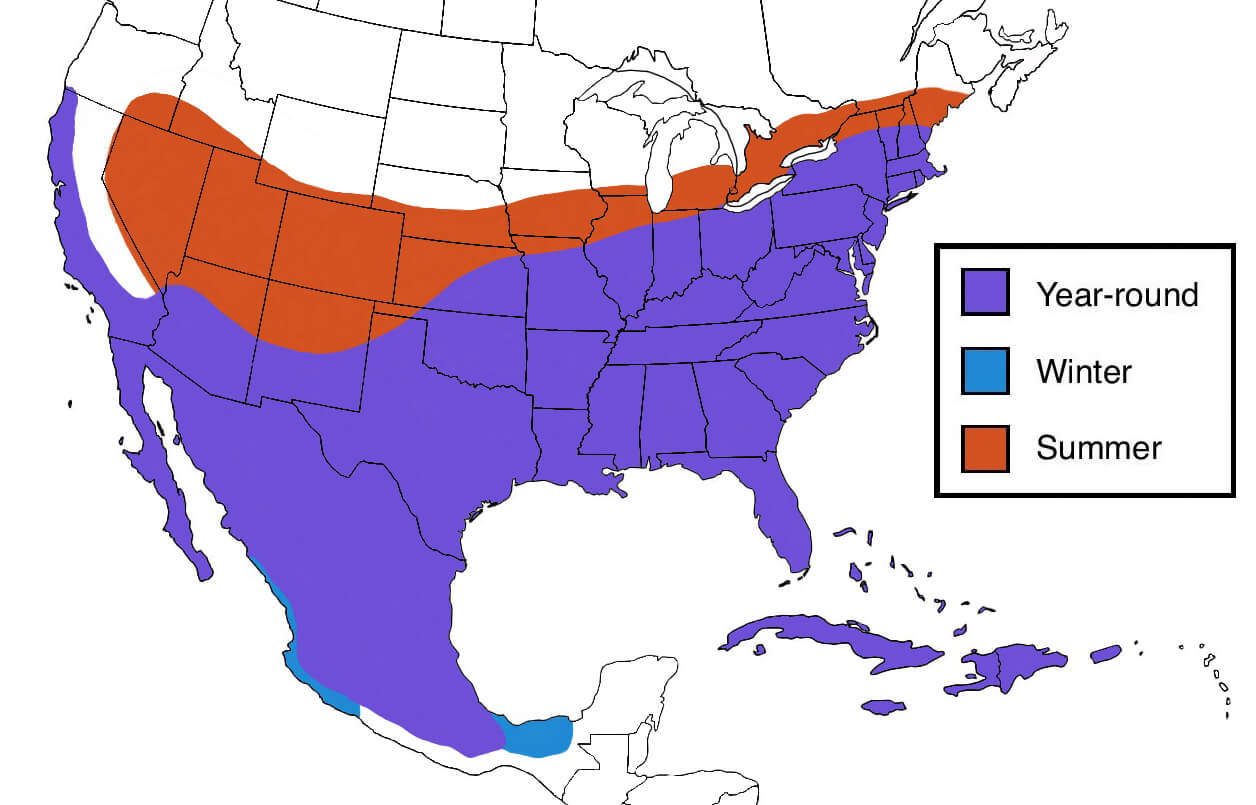
Similar Species: return to top
Loggerhead Shrike
Northern Mockingbirds differ from Loggerhead Shrikes in three important ways. First, the bill of the Mocker is fairly thin, while the bill of the Shrike is heavy and has a hooked tip, much like that of a hawk. (As an aside, Shrikes are predatory so they have a bill like a hawk to help them capture prey.) The face differs in that the Shrike has a black mask which is missing on the Mockingbird. Last, they both have a patch of white in the wing, but the size and shape differ as shown below.
Note: on both images below, the Mockingbird is on the left, and the Shrike is on the right.

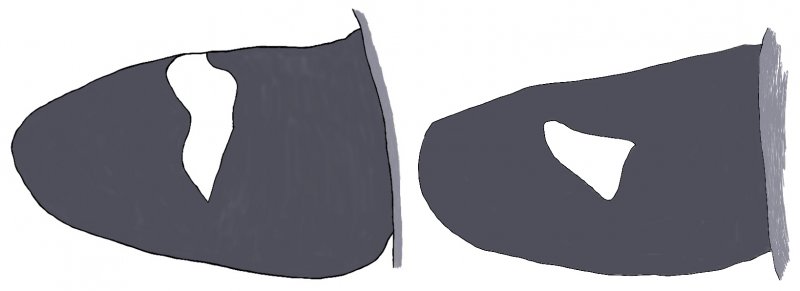
Gray Catbird
Catbirds are overall a more solid dark gray than Mockingbirds, with a black cap on the head, and dark rufous undertail coverts (the feathers under the tail). They do not have white patches in the wings or white outer tail feathers like Mockingbirds.
Townsend's Solitaire
Solitaires are a more uniform gray above and below, have a white eye ring, and the wing patch is smaller and buffy in color (more like a light tan).
Blue-gray Gnatcatcher
Gnatcatchers are much smaller than Mockingbirds, and tend to stay more hidden in foliage of trees and shrubs, while Mockers are more bold and visible. Color-wise, Gnatcatchers have more of a blue tint to the gray instead of brown. Also, Gnatcatchers have a white eye-ring and lack the white wing patch.
Brown Thrasher
Brown Thrashers are a rich brown above, and not easily confused with Mockingbirds. However, immature Thrashers have the same spotted breast as an immature Mocker, but more brown and less gray in color.
Habitat: return to top
Northern Mockingbirds live and breed in parks, suburban areas, and second-growth shrubby areas. The key to an area being suitable for them is it has to have a mixture of grassy areas and shrubby vegetation. They will nest in the shrubby vegetation, and frequently forage in the grassy plots.
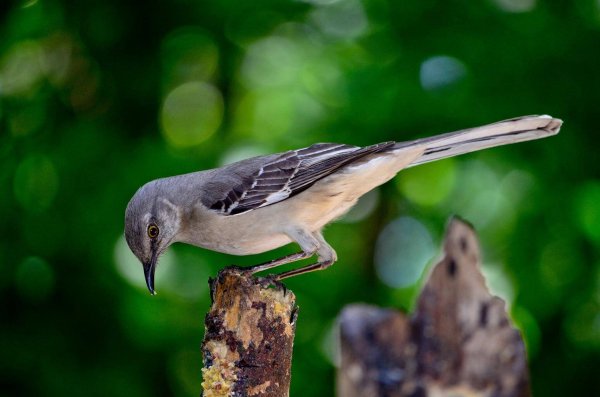
Nesting: return to top
- Nest Type: open cup
- Nest Location: nests are placed in shrubs and trees; nest heights are often 3-12 feet off the ground, but occasionally are as high as 50 feet up
- Clutch: 3-5 eggs (range of 2-6)
- Incubation Period: 12-13 days
- Nestling Period: 11-13 days
Diet: return to top
Mockingbirds east mostly insects (a wide variety) and invertebrates (like earthworms) in the summer, but will shift to a diet of largely fruit in the fall and winter. They will occasionally eat smaller vertebrates like lizards. Nestlings are fed almost exclusively on insects and invertebrates.
Mockingbirds rarely visit seed feeders, but are known to visit suet feeders. They are common residents in yards with both grassy areas and shrubs and trees, particularly fruiting ones.
Notes: return to top
Northern Mockingbirds are also known for their "wing flashing display", where they open their wings in a jerky fashion, then pull them back to the body. When they do this, they open the wings part-way, pause ever so slightly, then open them further, followed by another short pause, then open them fully, followed by a final short pause. The whole process takes several seconds or less. Why they do this has been debated by scientists for decades. It was long believed to aid with hunting insects, with the white patch in the wing scaring insects into flight, but now no one really knows. There are other species closely related to Mockingbirds that have a similar behavior, but they lack the white patch in the wing. Also, young birds just out of the nest have been observed doing this display, but they are too inexperienced to be foraging on their own, so it couldn't always be used for foraging. I've also seen Mockingbirds giving the same display while perched atop a power line pole when they were obviously not foraging. So for now, wing flashing will remain a really interesting display to watch and marvel at why they do it.
